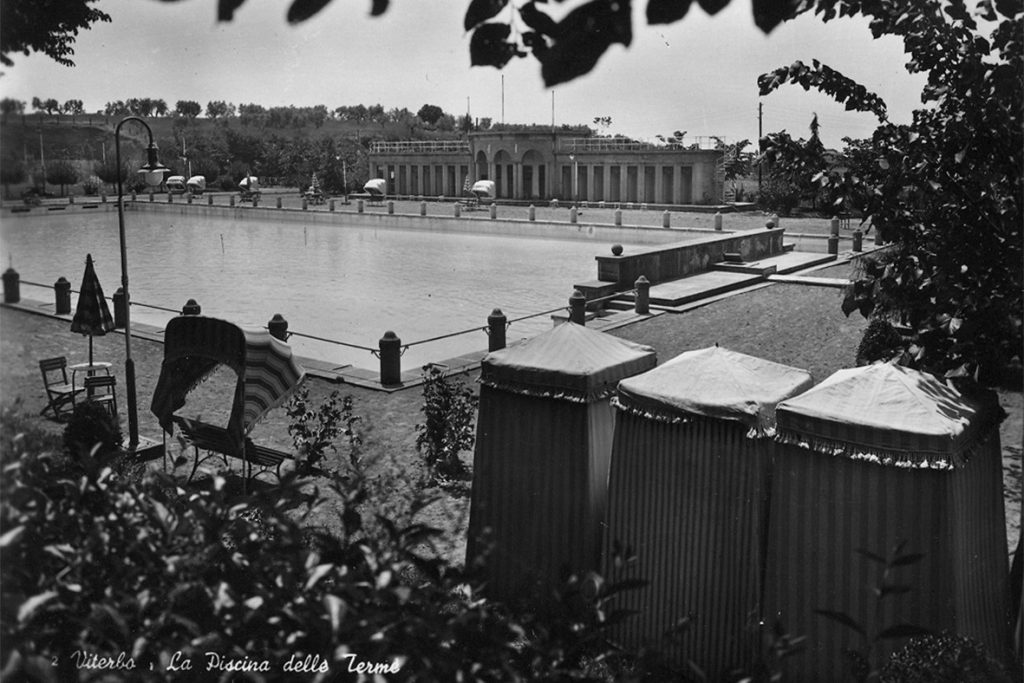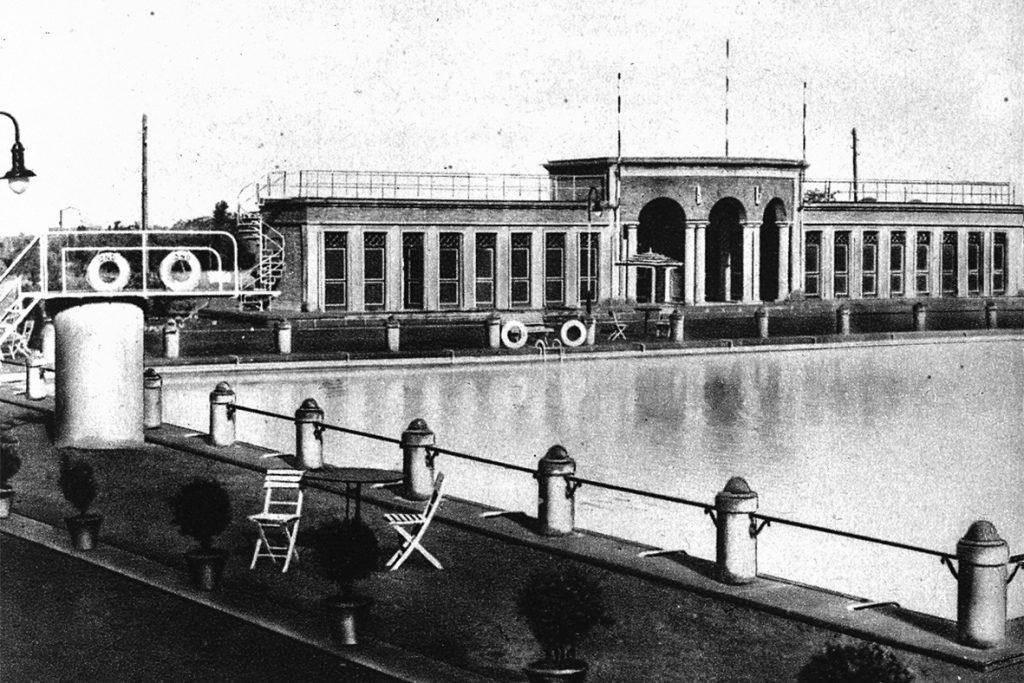The vestiges of the Roman baths extend for eleven kilometres along the ancient Via Cassia roadway, on the outskirts of Viterbo, becoming particularly prominent in the vicinity of the three main thermal areas: Aquae Passeris, Paliano, and, the most prominent, Bullicame.
The important role that the Viterbo hot springs have played since ancient times is extensively documented, as evidenced by the writings of
Strabbone, Tibullus, Symmachus, Martial, and Scribonius Largus, the physician of the Roman Emperor Tiberius.
The springs are the result of a twelve-kilometre fracture in the earth’s crust, from which hyperthermal waters (40°-58°C) rich in sulphur salts, calcium bicarbonate, magnesium and other minerals, emerge spontaneously, driven by the force of sulphurous and carbonic gases. Of these, the most important and well-known comes from a white limestone mound: the Bullicame spring.
The Bullicame hot spring produces fluorinated sulphur-sulphate-bicarbonate-alkaline-earth water at 58°C, which has always been renowned for its therapeutic properties, even in the field of Medical Hydrology.
Its remarkable value lies in its chemical and physical properties, which make it suitable for many thermal therapy purposes, for the treatment and prevention of chronic respiratory and osteoarticular conditions, and for the treatment of various cutaneous, genital, metabolic conditions. All the thermal waters for the services at Terme dei Papi, including the splendid 2,000 square metre monumental swimming pool, come from the Bullicame hot spring.
The vestiges of the Roman baths extend for eleven kilometres along the ancient Via Cassia roadway, on the outskirts of Viterbo, becoming particularly prominent in the vicinity of the three main thermal areas: Aquae Passeris, Paliano, and, the most prominent, Bullicame.
The important role that the Viterbo hot springs have played since ancient times is extensively documented, as evidenced by the writings of
Strabbone, Tibullus, Symmachus, Martial, and Scribonius Largus, the physician of the Roman Emperor Tiberius.
The springs are the result of a twelve-kilometre fracture in the earth’s crust, from which hyperthermal waters (40°-58°C) rich in sulphur salts, calcium bicarbonate, magnesium and other minerals, emerge spontaneously, driven by the force of sulphurous and carbonic gases. Of these, the most important and well-known comes from a white limestone mound: the Bullicame spring.
The Bullicame hot spring produces fluorinated sulphur-sulphate-bicarbonate-alkaline-earth water at 58°C, which has always been renowned for its therapeutic properties, even in the field of Medical Hydrology.
Its remarkable value lies in its chemical and physical properties, which make it suitable for many thermal therapy purposes, for the treatment and prevention of chronic respiratory and osteoarticular conditions, and for the treatment of various cutaneous, genital, metabolic conditions. All the thermal waters for the services at Terme dei Papi, including the splendid 2,000 square metre monumental swimming pool, come from the Bullicame hot spring.




Privacy Policy | Cookie Policy
Phone: +39 0761 3501
| Fax: +39 0761 352451
Email: info@termedeipapi.it

Privacy Policy | Cookie Policy
Phone: +39 0761 3501
Fax: +39 0761 352451
Email: info@termedeipapi.it